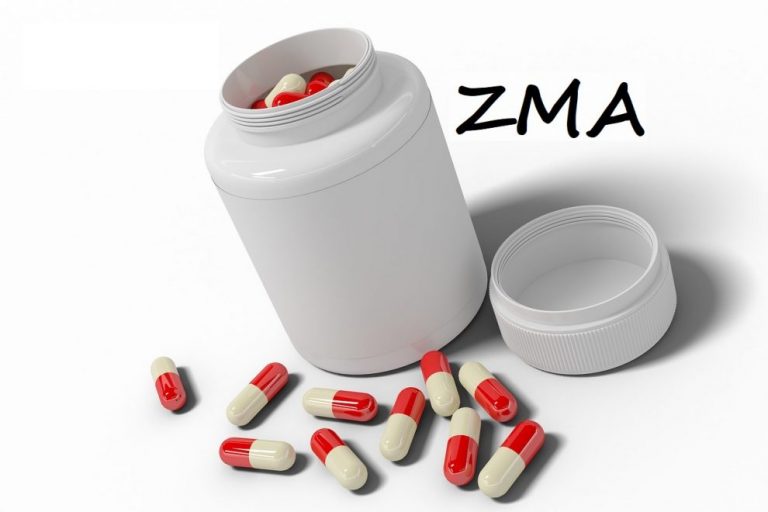Micronutrients are elements that occur in our bodies and have a positive effect on the work of our body, on specific functions, behaviors and feelings. The microelements include, among others, such elements as iodine, selenium, iron, molybdenum, fluorine, manganese, boron, zinc, cobalt, chromium and copper. The demand for elements is below 100 mg a day. Both excess as well as deficiency can contribute to many physiological disorders, which is why it should be so important to control their levels.
Micronutrients include, among others, body fluids, many enzymes as well as high energy compounds. They are building compounds, including bone tissue, regulate organ and systemic functions. And what is ZMA? It is a combination of zinc, magnesium and vitamin B6. They are a natural solution that is necessary to protect the body against diseases, various types of injuries, excessive physical exertion or even lack of appetite. For people training ZMA is important in order to gain muscle mass.
ZMA and microelements - action
Each element has a specific action that affects the body's work. Each of them is responsible for specific processes, functions and fitness of the body. And yes:
It stimulates the pancreas, thymus and prostate to work, takes part in the transformation of proteins, fats and carbohydrates, strengthens our immunity and helps to cope well with the disease.It affects fertility, regulates menstruation, is good for the treatment of hemorrhoids, diabetes, and hypothyroidism.Thanks to the zinc, wounds, acne, pimples and burns are easier to heal.It also affects the appearance of hair and nails.Deficiency of this element in the body causes lack of appetite, skin disease, dry mouth, decreased libido, as well as loss of taste and smell, constant feeling of weariness, worse memory, weakened immunity and general body fatigue.The largest amount of zinc is found in calf liver, pumpkin seeds, cocoa, buckwheat, oat flakes.The demand for zinc in men is 9.4 mg / diu women 6.8 mg / day.
It is an element necessary for the body to function properly.It is, among other things, a building material for bones and teeth.It takes part in the transformation of carbohydrates, fat proteins, regulates the pressure, has a positive effect on our entire nervous system, and protects against the occurrence of cramps and atherosclerosis.If we have too little magnesium in our body, it will manifest itself, among others, with cramps, numbness and tingling, weakened muscles, high sweating, frequent migraines and hair loss.The most magnesium is found in chocolate, avocado, bananas, vegetables, milk, pumpkin seeds and nuts.Demand for this element depends on age, sex or activity.In children, it ranges from 80-410 mg daily, in women 310-320 mg, in men 400-420 mg.The most frequently chosen forms of magnesium include, among others,
- Magnesium oxide - a combination of magnesium and oxygen. The bioavailability is 4%.
- Magnesium chelate - a combination of glycine and magnesium. Absorption is about 24%
- Magnesium citrate - a combination of citric acid with three molecules of magnesium. Absorption is 25-30%
- Magnesium malate - a combination of magnesium and malic acid. Absorption is about 30%
- Magnesium orotate.
- Magnesium taurate
- Magnesium lactate
- Magnesium threonate
And read about the best forms of magnesium here !
It is soluble in water and must be supplied with the diet as it is not stored in the body.It participates, inter alia, in the synthesis of proteins, in the production of hormones, enzymes, as well as hemoglobin.B6 is essential for kidney disease as well as for the treatment of anemia.It has a positive effect on the entire nervous system.Thanks to this vitamin, we support the work of the heart, regulate blood pressure, and reduce the effects of taking medication.Its deficiency is manifested, among others, by anemia, nervousness, changes in the skin, numbness of hands and excessive hair loss.Demand for vitamin B6 is 1.3 mg in women and men up to 50 years of age and 1.5 mg in women over 50 years old and 1.7 mg in men over 50 years of age.In pregnant women it is 1.9-2 mg, and in children below the age of 9 below 1 mg.
ZMA and microelements - for whom?
ZMA and micronutrients should take in the form of supplements all those people whose test results show shortages of particular elements.We live today in times of constant pursuit of everything, accompanied by excess stress, lack of sleep, constant fatigue.We bet on a bad diet, smoke cigarettes, drink alcohol in excess.All this significantly influences the level of ZMA and micronutrients in our body.If their level is right then there is no need to take additional doses.The elements are good for people who want to naturally raise the level of testosterone, which want to improve the quality of sleep, concentration, as well as the efficiency and strength of the body.When it comes to ZMA, this is good for people who are struggling with muscle cramps, with post-workout pain in general body fatigue.






